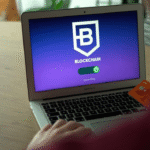In recent years, the concept of tokenizing real-world assets has gained significant traction in the financial world. Tokenization offers a way to digitize ownership of physical assets, making them easier to manage, trade, and access liquidity. From real estate and art to commodities and intellectual property, almost any tangible or intangible asset can be tokenized. In this comprehensive guide, we will walk you through the step-by-step process of tokenizing real-world assets, covering the necessary technology, legal considerations, and market strategies.

Step 1: Asset Selection and Evaluation
The initial step in any successful tokenization project hinges on selecting the most suitable asset. This critical decision lays the groundwork for the entire process, impacting factors like investor interest, market liquidity, and regulatory compliance.
Unlocking Digital Asset Basics: From Cryptocurrencies to Real-World Asset Tokenization
Here’s a deeper dive into the world of asset selection and evaluation for tokenization:
Why Asset Selection Matters
Investor Appeal: The chosen asset should hold intrinsic value and generate potential returns for investors. Real estate, for instance, offers both capital appreciation (increase in property value) and rental income streams, making it attractive to a broad investor base.

Liquidity: Assets with a readily available secondary market ensure investors can easily buy and sell their tokenized holdings. Real estate, while valuable, traditionally suffers from low liquidity due to the complexities involved in selling physical property. Fractional ownership through tokenization tackles this challenge by enabling investors to trade smaller portions of the asset.
Regulatory Landscape: Regulatory frameworks surrounding tokenized assets are still evolving. Selecting an asset class with clear and established regulations helps mitigate potential roadblocks and legal hurdles.
Ideal Asset Characteristics
Divisibility: The asset should be divisible into smaller, tradable units represented by tokens. Real estate, traditionally indivisible, becomes highly divisible through tokenization, allowing for fractional ownership.
Ownership Clarity: Clear and verifiable ownership history is essential for successful tokenization. Landed property, for example, usually has well-documented ownership records, making it suitable for tokenization.
Liquidity Potential: Assets with established markets or the potential to develop a secondary market for the tokens are ideal. The St. Regis Aspen Resort example demonstrates how tokenization can unlock hidden liquidity in traditionally illiquid assets like luxury real estate.
Real-World Example: The St. Regis Aspen Resort
As mentioned earlier, the St. Regis Aspen Resort in Colorado serves as a compelling illustration of successful asset selection for tokenization. Aspen Digital, a blockchain firm, fractionalized ownership of the resort by creating tokens representing ownership interests. This innovative approach unlocked several benefits:
Fractional Ownership: Investors gained access to a luxury property investment normally out of reach due to its high price tag. Tokenization allowed for fractional ownership, making it more affordable for a wider range of investors.
Increased Liquidity: The tokenized ownership structure facilitated the creation of a secondary market for investors to easily buy and sell their holdings in the resort.
Democratic Participation: Tokenization opened doors for a broader investor base to participate in the ownership and potential returns of the resort, previously limited to high-net-worth individuals.

Step 2: Legal and Regulatory Compliance
Ensuring compliance with relevant laws and regulations is essential to avoid legal issues and protect investors’ interests. For example, tokenizing securities falls under securities laws in many jurisdictions, requiring compliance with regulations such as the Securities Act in the United States. Harbor, a blockchain platform, specializes in compliant tokenization of real estate and other assets, ensuring regulatory compliance throughout the process.
Step 3: Tokenization Platform Selection
Choosing the right tokenization platform is critical for the success and security of the tokenized asset. Ethereum, one of the most popular blockchain platforms, offers robust smart contract capabilities and widespread adoption. RealT, a platform built on Ethereum, specializes in tokenizing real estate properties, providing investors with fractional ownership and passive income opportunities.
Step 4: Asset Valuation and Tokenization Structure
Determining the asset’s valuation and structuring the tokenization process are essential steps in attracting investors and ensuring the asset’s profitability. Maecenas, a blockchain-based platform, tokenized a multi-million-dollar painting by renowned artist Andy Warhol. The platform divided ownership of the artwork into digital shares, allowing investors to own a portion of the painting and benefit from potential appreciation in value.
Step 5: Smart Contract Development
Smart contracts play a vital role in governing the token issuance, ownership, and transfer. OpenLaw, a blockchain-based legal platform, provides tools for creating legally enforceable smart contracts tailored to specific asset tokenization projects. These smart contracts automate processes such as dividend distribution and voting rights, enhancing transparency and efficiency.
Step 6: Token Issuance and Distribution
Issuing and distributing tokens to investors requires careful planning and compliance with regulatory requirements. Securitize, a compliance platform for digitizing securities on the blockchain, enables issuers to manage the entire token issuance process, including investor verification and distribution. The platform ensures compliance with securities regulations while providing liquidity and transparency to investors.
Step 7: Secondary Market Integration
Facilitating liquidity in secondary markets is essential for attracting investors and ensuring the success of the tokenized asset. tZERO, a regulated security token exchange, provides a secondary market for trading tokenized assets, including real estate and private equity. Investors can buy, sell, and trade security tokens with transparency and regulatory compliance.
Step 8: Investor Relations and Management
Maintaining strong investor relations is crucial for building trust and confidence in the tokenized asset. Harbor Prime Real Estate Investment Trust (REIT), for example, leverages blockchain technology to provide investors with real-time access to property performance metrics and financial reports. This transparent approach to investor relations enhances transparency and accountability.
Step 9: Asset Management and Maintenance
Managing and maintaining the tokenized asset is essential for preserving its value and ensuring regulatory compliance. Meridio, a blockchain platform for real estate investment, offers tools for managing property ownership, rental income distribution, and property maintenance tasks. Investors can participate in property management decisions through decentralized governance mechanisms.
Step 10: Compliance Monitoring and Reporting
Ongoing compliance monitoring and reporting are necessary to ensure adherence to regulatory requirements and maintain investor trust. Coinfirm, a blockchain analytics platform, specializes in compliance solutions for tokenized assets, including transaction monitoring and regulatory reporting. The platform helps issuers and investors stay compliant with AML and KYC regulations while mitigating the risk of financial crime.
By following these steps and leveraging the right technology and expertise, such as working with the experts at Kenson Investments, asset owners can successfully engage in real world asset tokenization, unlocking liquidity and accessibility for investors while maintaining regulatory compliance and transparency.
In conclusion, tokenizing real world assets on chain offers a revolutionary way to unlock liquidity, enhance accessibility, and streamline asset management. By following the step-by-step guide outlined above and leveraging the right technology, legal expertise, and market strategies, you can successfully tokenize your real-world assets and unlock their full potential in the digital economy. Whether you’re a real estate developer, art collector, or business owner, tokenization presents exciting opportunities to transform traditional assets into security tokens and integrate them into the real world asset market and RWA defi. Reach out to us today at Kenson Investments.














